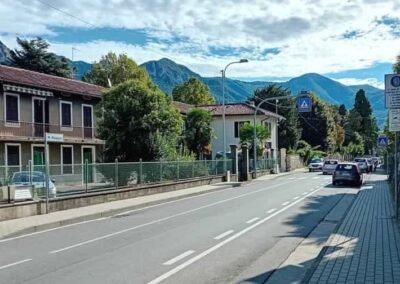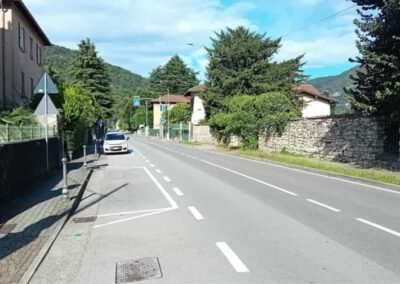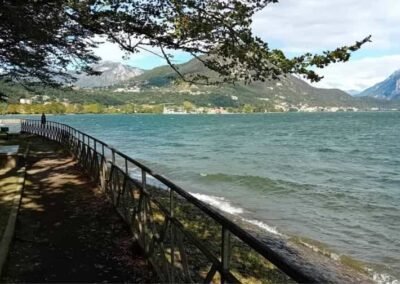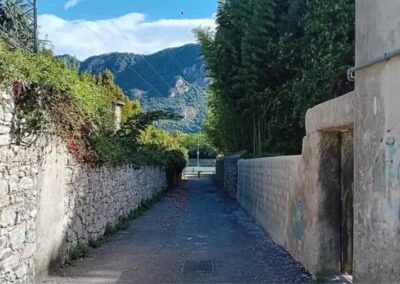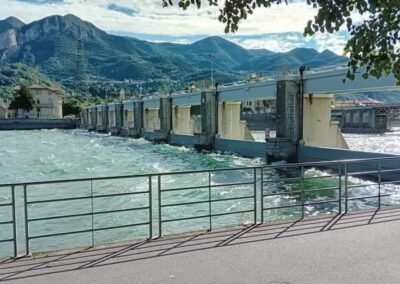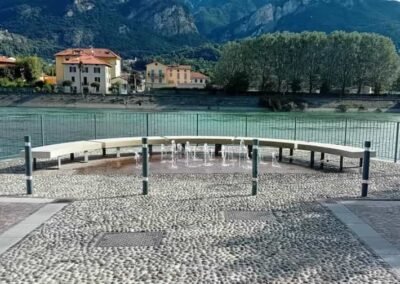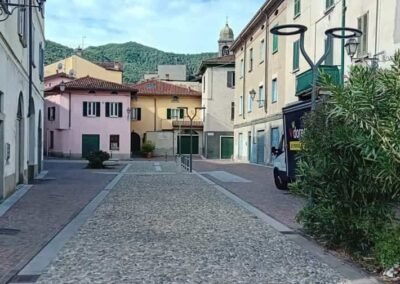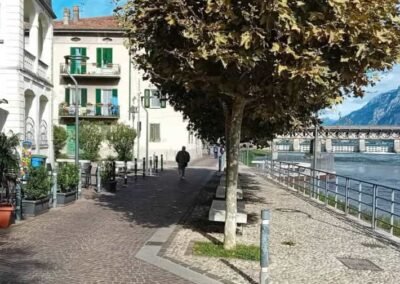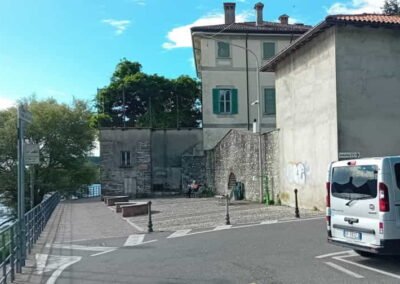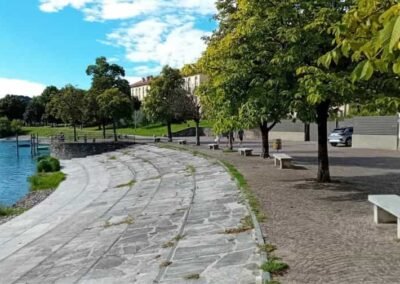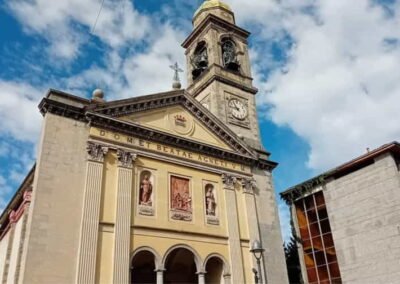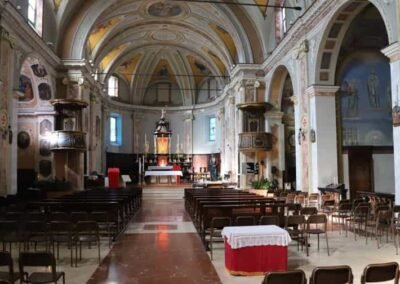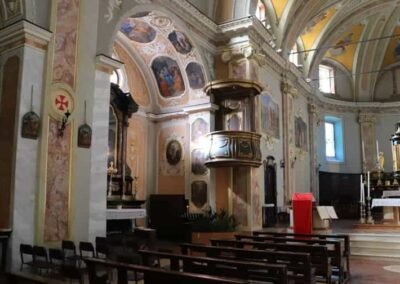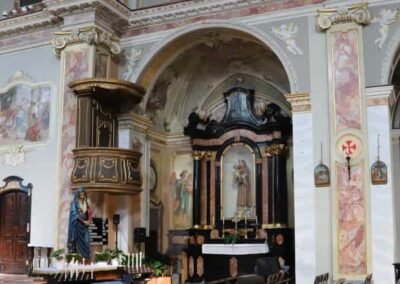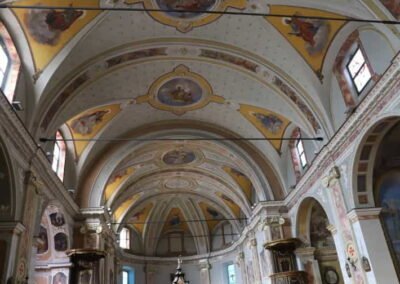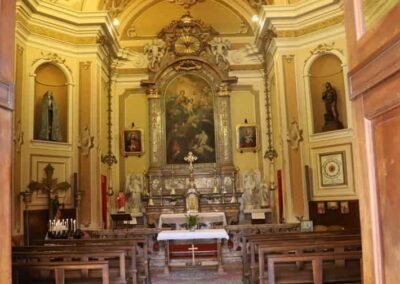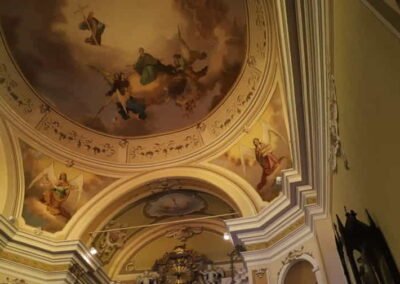HOME
THE REGIONS OF ITALY
PLACES IN ITALY
Italy in Photos
Via Professor Mario Redaelli, 23854 Olginate LC, Italy (September 2024)
Olginate
Nestled along the eastern shore of the Adda River, in the Lombardy region of northern Italy, Olginate is a charming, lesser-known Italian town rich in history, natural beauty, and cultural significance. Located in the province of Lecco, Olginate offers a blend of picturesque landscapes, historical sites, and a genuine glimpse into Italian life away from the crowded tourist destinations. It lies approximately 50 kilometres from Milan and just a short drive from Lake Como, positioning it well within reach of larger cities while preserving a peaceful, small-town atmosphere. The town’s origins date back to Roman times, and traces of its ancient history are scattered throughout, from old churches to historic buildings that retain the architectural charm of centuries past. Olginate has also been influenced by its proximity to the Adda River, which has historically provided a strategic location for trade, agriculture, and industry. Over the years, the town developed along with the river, utilizing its waters for irrigation and later, during the industrial boom, for hydroelectric power—a resource that has left a lasting impact on the region. The nearby Paderno d’Adda bridge, an impressive steel construction from the late 19th century, serves as a reminder of this period and is an engineering marvel, attracting visitors interested in the industrial history of Lombardy. One of the key features of Olginate is its proximity to natural landscapes that offer opportunities for outdoor activities and relaxation. The Adda River, with its tranquil waters and scenic banks, is a hub for both locals and visitors who enjoy fishing, walking, or simply taking in the views. The river area is part of the larger Parco Adda Nord, a protected nature reserve that spans across several municipalities, including Olginate. This park offers a network of trails, picnic spots, and bird-watching areas, making it a haven for nature lovers. Additionally, the nearby mountains, part of the pre-Alpine range, offer hiking trails with panoramic views over the Lombard plains and the shimmering waters of Lake Garlate. Just south of Lake Como, Lake Garlate is a smaller lake that shares the same natural beauty and serene ambiance as its more famous neighbour but is significantly less crowded.
Olginate also boasts several notable cultural and historical landmarks. Among these is the 12th-century Church of San Rocco, a small yet beautifully preserved Romanesque church that is a testament to the town’s medieval roots. In the town centre, the parish church of Sant’Agnese, with its impressive bell tower, adds to the rich historical tapestry of Olginate. Festivals and local events, often held in the town’s main square, celebrate these traditions and bring the community together, with food, music, and dance playing a central role. The annual “Sagra della Patata,” or Potato Festival, is one of the town’s favourite events, showcasing local produce and traditional recipes that have been passed down through generations. Despite its historical charm, Olginate is not frozen in time. Modern amenities, restaurants, and shops cater to residents and visitors alike, blending contemporary Italian life with the town’s age-old customs. Olginate offers a relaxed pace and inviting atmosphere, making it a perfect destination for those looking to explore a different side of Italy—one that is authentic, welcoming, and steeped in history and natural beauty. The town’s harmonious mix of old and new, alongside its stunning landscapes and proximity to both river and mountains, creates an alluring setting that reflects the diverse beauty of Lombardy itself.
Worth a Visit
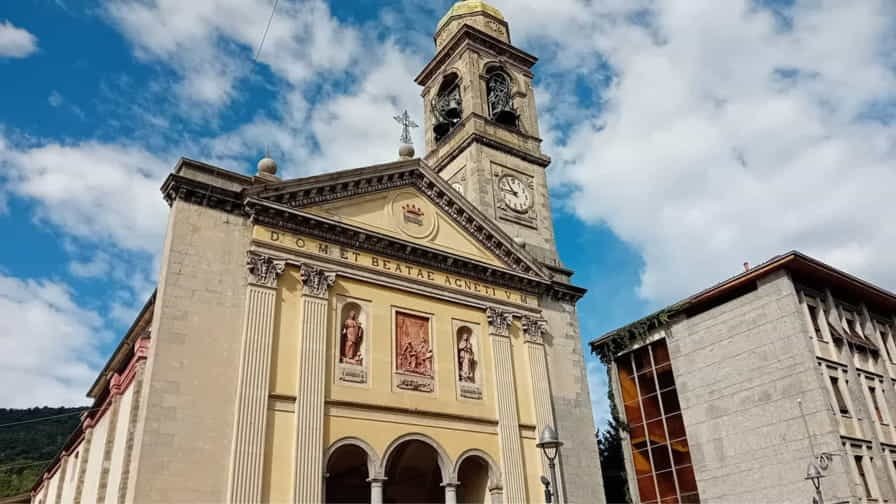
The Church of Saint Agnes (Chiesa Prepositurale di Sant’Agnese) in Olginate, Lecco, is a prominent religious and architectural landmark in the Lombardy region of northern Italy. Originally established in the 16th century under the direction of Cardinal Carlo Borromeo, it became the parish church when its title was moved from Garlate in 1574. Its construction began in earnest in 1579, following an earlier parish dedicated to Santa Margherita. Over the centuries the church has seen several modifications: in 1644 its orientation was reversed (rotated 180°), and between 1745 and 1769 the roof was raised and the vaults built. Architecturally, the façade presents a central triangular pediment, framed by lesenes (pilaster strips), with three round-arch portals and classical elements. Attached is a square-based stone campanile, topped with an octagonal tambour and dome. Inside, the church plays an active role in the life of the community, serving as the main place of worship in Olginate with regular masses and parish activities.
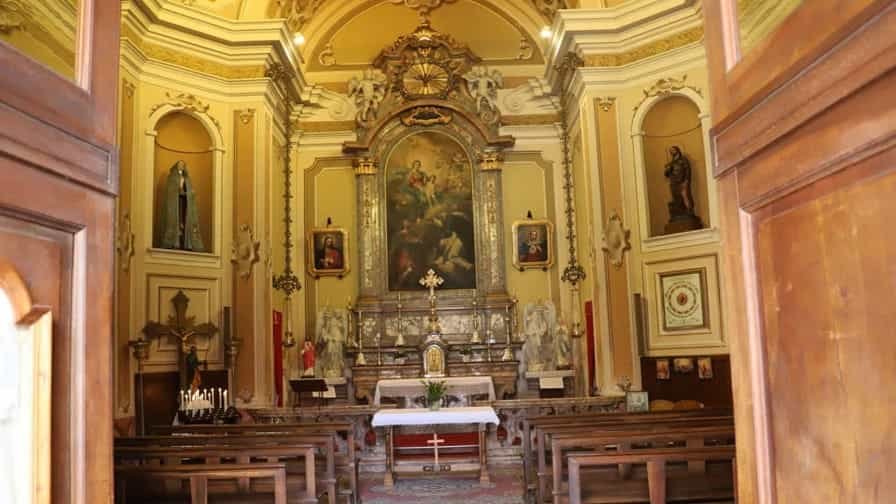
The Parrocchia San Rocco is one of the historic oratories of Olginate, situated in a tranquil setting on Via San Rocco. It belongs to the territorial area of the larger parish community of Olginate, under the Archdiocese of Milan. The church (or oratory) is dedicated to Saint Rocco, widely revered as a protector against plagues and infirmity, a devotion deeply rooted in this region. Though relatively modest in size compared to the main parish church (Sant’Agnese), San Rocco has played a meaningful role in the spiritual, social, and cultural life of local faithful. It serves as a place for weekday Masses, devotions (such as the Rosary), and community gatherings, especially during the feast day of Saint Rocco. Historically, San Rocco’s location is linked to ancient paths through the hills above the Adda river valley; the oratory stood near routes used since Roman times, making it both spiritually and geographically significant. Over time, the building has seen renovations and restorations, but it still retains its humble charm and devotional importance for Olginate’s residents.
Photo Gallery of Walk in Bevagna – Piazza Giuseppe Garibaldi to Corso Amendola
Approximately 0.72 km – 0.45 miles
The walk starts in Piazza Giuseppe Garibaldi – Chiesa di San Francesco, Vicolo S. Francesco – Vicolo S. Francesco – Piazza S,Francesco – Corso Giacomo Matteotti – Piazza Filippo Silvestri – Corso Amendola – Piazza dell’Asilo – Via S. Maria – Corso Amendola
COPYRIGHT © 2018-2025 ITALY IN PHOTOS - ALL RIGHTS RESERVED
